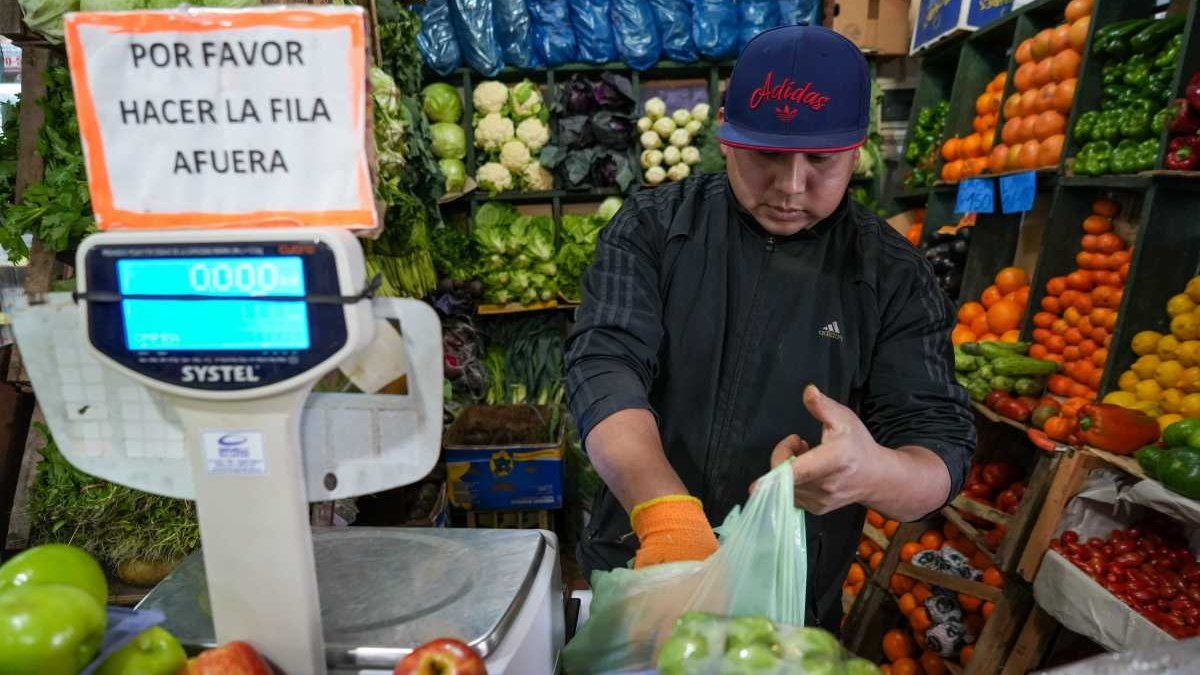“Foods in the basic basket are rising more than the average for the food category in general. Their year-on-year increase is 87%, with income from Argentines with unregistered and informal wages in the order of 60%. That is to say , the purchasing power of money falls sharply and the income of Argentines is not enough to cover the basics of food,” said Damián Di Pace, director of Focus Market.
It is that, precisely, the general inflation of August would be between 6.4% and 6.7%, according to different surveys of private consultants. For example, the IPC GBA surveyed by Ecolatina grew 6.7% last month, with food and beverages rising 7.4%. This category, they pointed out from the firm, explained 40% of the increase in the general level. “Increases in Vegetables (+16.7%), Noodles and pasta (+10.3%), Cheese (+9.3%), Cold cuts, sausages and preserves (+9.1%), Dairy products and eggs (+8.6%) and Fruits (+8.4%). On the contrary, the most moderate increases were seen in Beef (+2.2%) -contained by the fall in the price of cattle in the Cañuelas Agricultural Market- and in Ready-to-go meals (+1.1%) ”, they analyzed from the consultant.
Along the same lines, from C&T they projected a monthly increase of 6.7%, with Food and beverages climbing 7.5%, “with generalized increases in their components, although with notable rises in fruits and vegetables.”
“Argentina has underestimated the effects of the monetary issue to finance its fiscal deficit, concentrating on the argument that food prices rose due to the effect of the war in Russia and Ukraine,” said Di Pace, who added: “However, in Latin America the average inflation in Food is 1.2% while in Argentina it is 5.5%: that is, 5 times more, for which we must accept that there are untreated endogenous causes that are beginning to try to be corrected with the current conduct of the economy “.
Incidence in poverty
The increase in food has a stronger impact on the lower-income sectors. “Soon, the INDEC will release the data on indigence and poverty in our country. Argentines who fail to complete a basic basket become Indigent. Unfortunately, this situation has grown since December of last year, when homelessness in our country had been reduced to 8.2%. The price of food in relation to the deteriorated level of income of the population has left many people in this situation,” said Di Pace.
The INDEC will announce, effectively, the level of incidence of poverty and indigence for the first semester on September 28. However, they warn, the full impact of the acceleration of inflation and the loss of purchasing power will not be seen in this record.
“In the results that INDEC is going to publish, there is not going to be a great impact. My estimate is that it will give a result similar to that of the second half of 2021 in terms of the level of poverty (37.3%) and that it may even be slightly lower, ”Leonardo Tornarolli, Senior Researcher at the Study Center, explained to Ámbito. Distributive, Labor and Social (CEDLAS).
“What happens is that it is the six-monthly data, and inflation began to hit hard only in March. But when we have the data, we will be able to know how much poverty was in each of the quarters of the semester, and there we will already be able to see an increase between them. I think that in the second quarter we are going to have 4/5 more poverty points than in the first one”, said Tornarolli.
“Surely the strongest impact, in the six-monthly measurement of INDEC, will be observed in March of next year, when we know the results of the second half of 2022. There you will have the direct and accumulated effects of many months of high inflation in power purchasing power and the indirect effects through the economic standstill that is being generated little by little as a result of this instability”, concluded the analyst.
Source: Ambito
David William is a talented author who has made a name for himself in the world of writing. He is a professional author who writes on a wide range of topics, from general interest to opinion news. David is currently working as a writer at 24 hours worlds where he brings his unique perspective and in-depth research to his articles, making them both informative and engaging.




